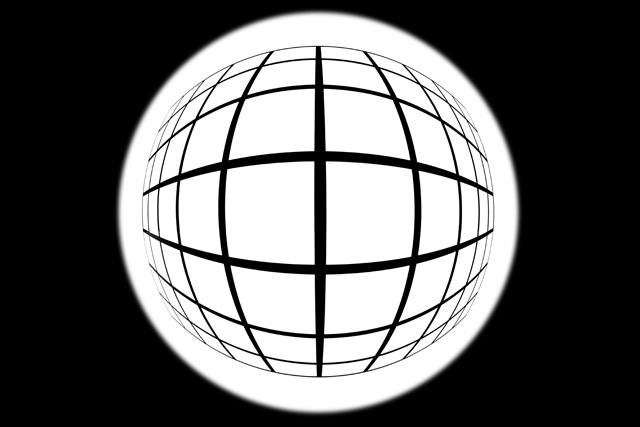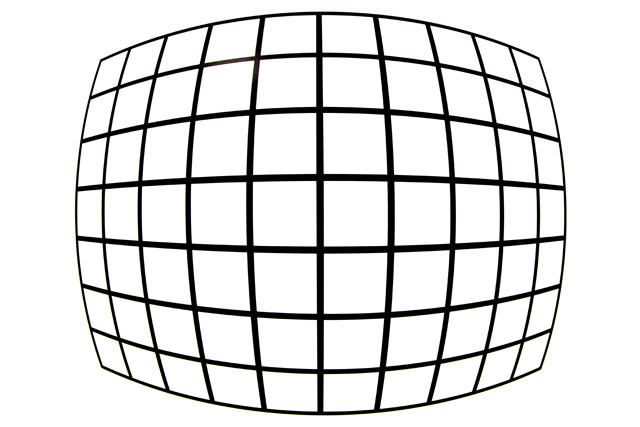|
Canon EF 8-15mm f/4 USM L Fisheye - Review / Test Report - Analysis |
|
Lens Reviews -
Canon EOS (Full Format)
|
|
Page 2 of 3

Distortion
We can't really come up with numerical data for the distortion characteristic. However, it is surely more meaningful to provide plain visuals to give you an idea - see also the sample image section. As mentioned, the Canon lens provides a circular fish-eye view at 8mm and a full format fish-eye view at (14-)15mm.
8mm:
 15mm:
15mm:

Vignetting
It is difficult to provide really accurate vignetting data of a fish-eye lens but it also nothing to worry about anyway.
MTF (resolution)
Measuring the resolution characteristic of a fish-eye is somewhat experimental - testing the extreme corners is simply not possible anymore because the test targets are getting so small that we can only provide center and border data here.
The Canon produced very decent resolution figures in our lab. The sweet spot is more at the wide end of the zoom range (the circular view at 8mm). The center quality is nothing short of breathtaking here - it even exceeds our usual scale. The border quality isn't quite as impressive but still good to very good at max. aperture. Stopping down increases the border quality to very good results. Diffraction effects have already a more substantial impact from f/11 onwards. The transition to the "black zone" - thus the edge of the image field - is "smooth" but that's hardly something to criticize here.
The quality is still fine at 15mm with an excellent center at f/4. However, the border quality is just good here and stopping down lifts the results barely across the very good mark.
The field curvature is very high at 15mm. Due to the immense depth-of-field this isn't really an issue though. The centering quality of the tested sample was pretty good.
Please note that the MTF results are not directly comparable across the different systems!
Below is a simplified summary of the formal findings. The chart shows line widths per picture height (LW/PH) which can be taken as a measure for sharpness.
If you want to know more about the MTF50 figures you may check out the corresponding Imatest Explanations
Chromatic Aberrations (CAs)
Interestingly the 8mm setting remains the sweet spot also with respect to lateral CAs which are fairly moderate at around 1.5px at the image borders. The issue amplifies to 2.5px at 15mm and medium aperture settings - this can get more obvious in critical (high contrast) scenes.

The "Middle Ground"
As already mentioned in the introduction it's probably a good idea to consider this lens to be a dual mode lens - a circular fisheye at 8mm and a full-format fish-eye from 14-15mm. Nothing will stop you to shoot images in between, of course, but you will have to live with a "cropped" image in this case which is not really attractive in our opinion. The following "simulated images" shows you what to expect e.g. at 12mm on a full format camera.

|